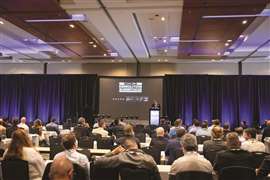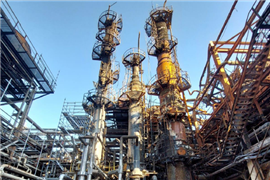How demolition and recycling is powering circular construction in Australasia
20 October 2025
From soil recovery to digital demolition, emerging technologies are helping Australia and New Zealand’s construction sectors balance booming growth with ambitious sustainability goals.
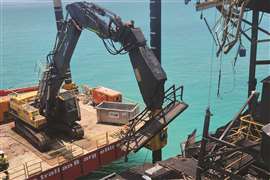 Photo: Liberty Industrial
Photo: Liberty Industrial
The demolition and C&D waste recycling sectors in Australia and New Zealand are gaining momentum as governments, contractors and technology providers seek to balance booming infrastructure demand with pressing environmental goals.
In Australia, for example, the Dept. of Climate Change, Energy, the Environment and Water found that the construction industry generated around 29 million tons of waste in the most recent reporting year — accounting for roughly 39% of all waste nationwide.
Meanwhile, New Zealand generates an estimated 7 million tonnes of C&D waste annually, with around 40% of landfill inputs linked to construction and demolition, according to government and industry estimates.
James Murphy, Head of Sales - Asia Pacific at CDE, says that while both countries have aggressive targets, much more can be done with soils — the single largest contributor to construction waste.
“If there’s an area that really needs development, it’s material standards. Not just locally, but globally, there’s a strong push towards performance-based material standards rather than the traditional, highly localised specifications.” He adds that in practice, this can be a barrier.
“For example, high-quality recycled soils and aggregates meet or exceed engineering performance benchmarks. “Where performance-based standards have been applied, those same materials have been successfully used in major road and civil projects, proving the quality is there.
“Moving in this direction would unlock far greater use of recycled materials across Australia and help the sector scale much faster.” Of course, the sector’s growth is closely tied to infrastructure pipelines.
In Australia, road, transport and utilities projects remain one of the largest pipelines for recyclers.
A significant boost to companies come in the form of 998 road projects scheduled nationally by 2031, which, according to the Government, will require around 200 million tonnes of conventional materials, of which more than 95% come from just five sources: aggregates, asphalt, rock/bluestone, sand and cement.
However, its estimates suggest that 27% of these could be substituted with recycled alternatives — equivalent to more than 50 million tonnes of materials.
New Zealand’s outlook is similarly positive. While short-term construction growth has softened, cost pressures are easing and medium- to long-term investment in transport and water projects remains strong.
Council-led urban regeneration in Auckland is also boosting both the volume and quality of recoverable materials.
Sustainability goals and a strong investment climate
That circular goal is tied to a larger sustainability demand within the region, with companies being tasked with lowering greenhouse gas emissions which the Government says should “be considered at all stages of the infrastructure lifecycle.”
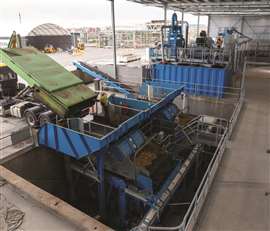 Murphy says although aggressive targets are in place, much more can be done with soils. Photo: CDE
Murphy says although aggressive targets are in place, much more can be done with soils. Photo: CDE
With that, Murphy describes demand for low-carbon solutions as “immense”.
He says: “In Australia alone the economic value of the construction materials sector is estimated north of $60 billion.
“Demand for low embodied carbon solutions is expected to rise significantly, recent reports estimate it could result in a billion dollar low carbon solutions market in the coming years.”
He adds that with the building and construction sector accounting for around 40% of global emissions, the opportunity to integrate recycled aggregates and soils into major works is significant.
“Ultimately, CDE believes that attitude and legislation must catch up with current technology and innovation to adopt an application-based approach and enable the re-use of recycled materials to achieve the desired effect on the sustainability of natural resources.
“We’re seeing more mandatory reporting requirements and a stronger push from stakeholders to demonstrate environmental impact.
“Material efficiency, water use and emission data all influence procurement decisions. There is a raft of government policy, landfill levies, and procurement frameworks that reward low-carbon or recycled content.”
Meanwhile, Australia’s landfill levies and recycled-content procurement incentives are already creating an enabling framework, though inconsistent planning and permitting between states remain barriers.
In New Zealand, landfill levies and the government’s Waste Strategy are pushing the market in the same direction, although data gaps continue to limit fully targeted policymaking.
New Zealand also has a long way to go with land fill levies in order create a fund to incentivize investment in new technologies which will truly drive landfill diversion. Interest rate reductions across both countries have improved financing conditions.
In August, the Reserve Bank of Australia cut the cash rate to 3.6%, while in New Zealand, borrowing costs are expected to stabilise in the 3–4% range in the next year. Murphy says this could revive previously delayed projects and stimulate recycling demand:
“We continue to watch the market closely, interest rates are forecast to hold steady in the 3–4% range over the next year, easing borrowing costs for businesses. “This stability could revive previously delayed projects and enhance affordability across construction segments.” : Major
Projects reinforce market confidence
The region’s growing investment in smart demolition and sustainable materials recovery is being demonstrated through flagship projects.
 James Murphy, Head of Business Development – Asia Pacific, CDE. Photo: CDE
James Murphy, Head of Business Development – Asia Pacific, CDE. Photo: CDE
The project scope included removal of structurally compromised sections to allow reconstruction works to proceed. Remotely operated vehicles (ROVs) and daily 3D sonar imaging were deployed to assess submerged structures and guide dismantling in poor underwater visibility.
In total, six tonnes of asbestos-containing material were safely removed and disposed of. Project Manager Mathew Clenton, said: “Our ability to mobilise immediately and apply engineered solutions in such a remote and challenging environment ensured the safe removal of damaged infrastructure, and enabled our client to proceed with reconstruction works without delay.”
Meanwhile, McMahon Services has been undertaking the controlled demolition of the Bell Bay Power Station in Tasmania.
Working with Hydro Tasmania, the company used 28 kg of explosives in a precisely timed blast to bring down the 24 m-high, 63 m-long structure within a 400 m exclusion zone.
Hazardous materials were managed under strict controls. The site will make way for ABEL Energy’s green hydrogen and methanol facility, which aims to produce 360,000 tonnes of renewable methanol annually from a 300 MW electrolysis plant and biomass gasifier.
The process will draw exclusively on renewable hydro and wind energy, combined with forestry residues.
The road ahead for circular construction
With infrastructure investment, government policy, and sustainability targets aligned, Australia and New Zealand’s C&D waste recycling sectors are positioned for significant growth.
As material standards evolve and new technologies like smart demolition, digital waste tracking, and advanced soil recovery scale up, the region could soon set a global benchmark for low-carbon construction and circular economy leadership.
Victoria outlines AU$55 billion of infrastructure investment
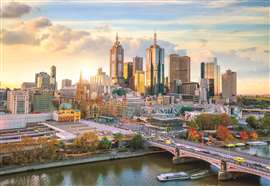 Infrastructure Victoria updates Victoria’s 30-year infrastructure strategy every three to five years. Photo: Adobe Stock
Infrastructure Victoria updates Victoria’s 30-year infrastructure strategy every three to five years. Photo: Adobe Stock
In March this year, the state of Victoria in Australia unveiled its draft 30-year infrastructure strategy which includes recommended investments of AU$55 billion (US$34.5 billion) that is says could provide AU$155 billion (US$97 billion) worth of benefits over the next decade if actioned.
Infrastructure Victoria named 50 priorities for the state across housing, energy, transport, health, social infrastructure and the environment as part of its draft 30-year infrastructure strategy. The strategy outlines 43 draft recommendations.
“Investing in new infrastructure is one way of building a more productive economy, and more will be needed as Victoria grows,” said Infrastructure Victoria Chief Executive, Jonathan Spear.
“But there is also lots the government can do to make better use of what it already has. The government can prioritise getting better use from its existing assets, improve how it maintains infrastructure so it performs better and lasts longer, and publish long term plans so that other governments, industry and not-for-profit providers can make better informed choices on where and when to invest,” added Spear.
The strategy highlighted how digital technologies can also produce big savings, with one example being how using building information modelling (BIM) to build major infrastructure and housing projects to reduce cost overruns, saving billions of dollars.
Infrastructure Victoria updates Victoria’s 30-year infrastructure strategy every three to five years. Following stakeholder and community feedback, the completed strategy will be tabled in the Victorian Parliament. The Victorian Government is required to respond to the strategy’s recommendations.
CONNECT WITH THE TEAM







